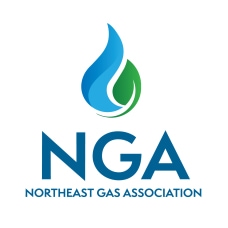PSMS Lessons Learned - Continuous Improvement - September 2024
PSMS Lessons Learned – September 2024
Pipeline Safety Management Systems – Adopting a Continuous Improvement Mindset Underpins Safety Culture
Adopting a philosophy of Continuous Improvement (CI) is essential to enabling sustainability of a pipeline safety management system. A CI mindset is also directly connected to enhancing overall efficiency and effectiveness in day-to-day operations and underpins a strong safety culture. Embedding CI into an organizational mindset creates an environment where weaknesses are identified & improved helping drive sustained reductions in incidents and risks to assets, personnel, and the public.
Description of Event:
A gas regulator station experienced a failure that resulted in over-pressurization. An apparent ice blockage in the pilot regulator caused the primary regulator to lose loading pressure limiting the regulator’s ability to close. The over-pressure protection (OPP) relief valve vented gas to the atmosphere, but not before allowing the over-pressure event. Upstream inlet piping to the station was recently replaced and hydro-tested in the previous construction season.
Root Cause(s) and Contributing Factor(s):
Key Causal Factor(s): Primary Causal Factor:
- Ice was found in the pilot/restricting orifice causing the lag regulator to lose loading pressure thus losing its ability to control pressure.
- Management System(s) – Standards, Policies, or Admin Controls (SPAC) NI were found inadequate.
Contributing Factor(s):
- Inappropriate OPP settings to protect downstream assets.
- Regulator station design aspects and equipment were inadequate to protect against moisture infiltration.
- Post hydrotest moisture mitigation practices inadequate.
Key Corrective Actions:
- Engineering to investigate revising the drying procedure to enable a more thorough drying of affected assets following hydrotesting.
- Review industry leading practices relative to current operating procedures and incorporate additional moisture removal mitigation practices.
- Re-examine prior similar events to ensure lessons learned were incorporated into training, procedures and work practices.
- Consider pneumatically pressure test of regulator station piping where possible considering overall safety concerns following a site specific risk assessment.
- Share event lessons learned with operating staff, engineering, training and safety. Incorporate hydrotest post testing moisture residue mitigation measures into work packages and pre-job briefs.
- Evaluate current relief valve set points and verify appropriate settings.
- Review internal and external reporting requirements when a suspected over pressure event is confirmed.
Key Lessons Learned:
A continuous improvement mindset enables viewing problems as opportunities or probortunities. When team members question the status quo and look for improvements to processes and procedures, a problem becomes an opportunity. In this case, a dew point of -40 Fahrenheit should indicate a successful pipeline drying operation, but in some cases, practice has shown otherwise. Understanding the geography and impact of environmental conditions for each of our projects as they progress through design and execution is key to ensuring the proper administrative and operational controls are in place to safeguard our employees and community. If unexpected moisture is discovered while placing new gas assets into service, call a safety stop and share the results with engineering to evaluate the site-specific conditions and potential mitigation measures.
NOTE: As we enter the winter operating season, NOW is the time to assess asset areas that may have been impacted by system hydrotests (residual moisture as indicated by elevated moisture dew points, pooling of water down stream of the hydrotest at system low-points, downstream pressure regulator station filter checks etc.) before freezing temperatures are upon us.

